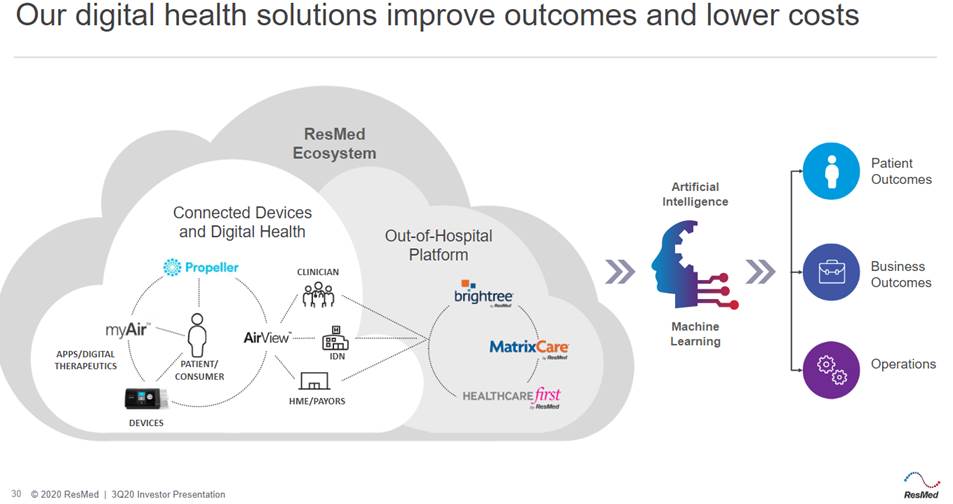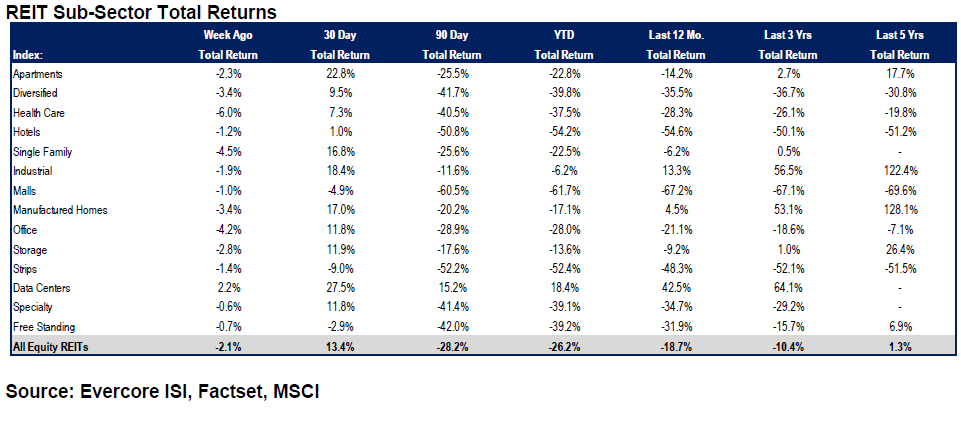Key takeaways:
· Alphabet reported better than expected results. Revenues better than feared. Search ads saw the biggest fall off in the end of March while Cloud and YouTube fared better.
· Exiting the quarter, search was down mid-teen percent, network ads were down low-double digits, YouTube was growing high-single digits and Google cloud platform (AWS/Azure competitor) was growing “meaningfully higher” than 52%.
· Advertising declines weren’t as bad as some were expecting despite their mix of small-to-mid sized business and exposure to heavily hit industries like retail and travel. Facebook, which reports after the close should see a similar hit.
· No guidance, but 2Q “will be difficult” for their advertising business. They are guiding to spending cutbacks including slowing the pace of hiring. Though they increased hiring by 20% in 2019, so they could still see meaningful growth.
· Planning capex down in 2020 primarily driven by reduction in global office facility investments.
· CEO, Sundar Pichai, offered up some thoughts on what might be a lasting impact, “ultimately, we’ll see a long-term acceleration of movement from businesses to digital services, including increased online work, education, medicine, shopping and entertainment. These changes will be significant and lasting.”…” companies are thinking about their shift to digital in a deeper way.”
Additional Highlights:
· Total revenues were up 15% on a constant currency basis. Currency was a 2pt headwind.
· Search revenue ($24.5B) up 8.6%. Ended the month of March in mid-teens percentage decline YoY. Significant rise in search activity, but reduced spending by advertisers and shift in search away from commercial topics, limiting their ability to show ads.
· YouTube ad sales ($4B) were +33.5%, growing faster than search revenues. Ended the quarter w/ YoY growth rate up high-single-digits.
o YouTube watch time has also significantly increased, particularly live streams. Andrea Bocelli’s live stream on Easter had 39m views.
o YouTube brand advertising growth accelerated in the first two months of the quarter, but started to experience headwinds in the middle of March.
o Direct response ads continued to have substantial year-on-year growth throughout the entire quarter.
· Network ad revenues: $5.2B, +4% YoY, exited the quarter declining mid-double digits percent.
· Google cloud (GCP and G Suite): was $2.8B, +52%.
o Driven by significant growth at GCP and ongoing strong growth at G Suite. Growth rate at GCP was meaningfully higher than that of Cloud overall.
o Saw headcount increases.
o Some deals taking longer to complete.
o 100 million students and educators are using Google Classroom, doubled the number from the beginning of March.
o Meet: schools and businesses, in particular, are using their secure video conferencing platform, Meet. Twitter and Shopify also use Meet. Now adding roughly 3 million new users each day, seen a 30-fold increase since January, now over 100 million daily meeting participants. “Stay tuned for much more.” Announcements coming up later this week.
· Hardware saw a decline in device activations due to falling consumer demand globally. Just launched Pixel Buds 2.
· Downloads of apps from Google Play rose 30% from February to March.
· Massive increase in demand for Chromebook.
· Other bets – revenue primarily generated by fiber and verily. Operating loss increased to $1.1 billion.
· Margin contraction:
o Operating margin contracted 400bps.
o Driven by higher costs associated with depreciation, data centers, higher content acquisition costs for YouTube, headcount and a reserve for estimated credit deterioration as a result of COVID-19.
o Partially offset by lower TAC as a percent of ad revenue, 22.1% vs 22.4%. Reflects a favorable revenue mix shift from network to Google properties.
· Outlook: No specifics. Optimistic on the durability of their business for 2 major reasons:
o 2Q “will be difficult” for advertising
o advertising spending closely correlates with the overall health of the economy
o Cutting back on spending…slowing the pace of hiring. “Looking at levers we have to moderate spending.” Originally said 2020 headcount growth would be greater than the 20% growth in 2019.
o Originally planning an increase in capex this year, now expect modest decrease. Largely driven by lower real estate expense.
o Overall spend on tech infrastructure should be the same YoY. More spend on servers than on data center construction.
o They are seeing early signs that consumers returning to commercial behavior. Since the close of the quarter, management noted that they have not seen further deterioration in YoY declines for search, while YouTube direct response has remained strong while and YouTube brand advertising continued to decline.
o Given that many of the trends they are discussing were abrupt, and are from a few weeks of behavior they cautioned against extrapolating any of the trends.
· Q1 FCF was $5.4B and they ended the quarter with cash of $117B. They have ~11% of their market cap in net cash. The stock is still reasonably valued, trading at a ~4.5% FCF yield on 2021. They plan to maintain pace of share repurchases.
· In terms of recovery with ad spend…Pichai said, “recovery in ad spend will depend on a return to economic activity. There are two key aspects of our business that give us confidence about the future. First, as we saw after 2008, one of the strongest features of Search is that it can be adjusted quickly, so it’s relatively easier to turn off and then back on, and marketers see it as highly cost-effective and ROI based. Second, our business is more diversified than it was in 2008, for example, Cloud.”
Sarah Kanwal
Equity Analyst, Director
Direct: 617.226.0022
Fax: 617.523.8118
Crestwood Advisors
One Liberty Square, Suite 500
Boston, MA 02109
www.crestwoodadvisors.com
$GOOGL.US
[category earnings ]
[tag GOOGL]










